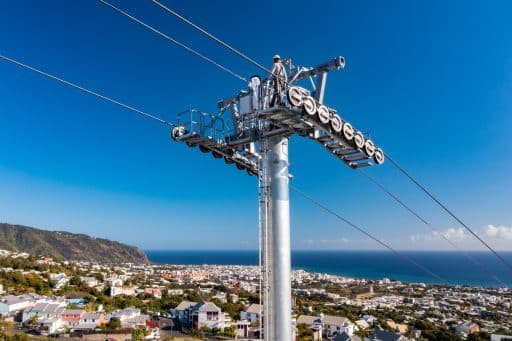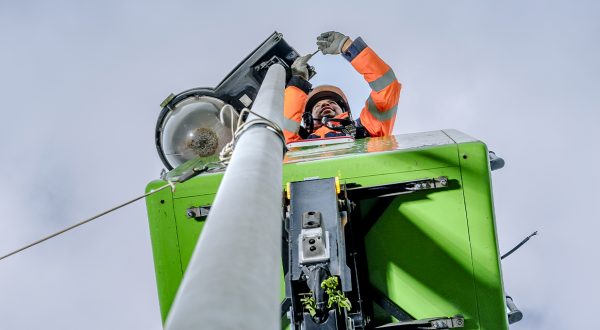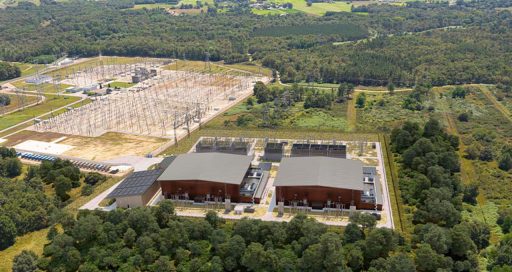Cable car systems emit no CO2, have a low impact in terms of land take and can be built at a reasonable cost. As such, they are of growing interest to urban areas, which see them as a relevant way to renew their mobility mix.

One of the cleanest modes of transport, fully electric cable cars systems produce no CO2 emissions and very little noise pollution. Traditionally found in winter sports resorts, they could well become the new standard in urban mobility. It is estimated today that 80 systems are in operation globally. The biggest of these is located in La Paz, Bolivia, where 5 lines transport 160,000 passengers every day between the centre of the city (which sits 3,500m above sea level) and its peripheral housing estates.
Saint-Denis in Réunion Island inaugurated its first cable car system at the end of 2021. The project was carried out with the support of two VINCI Energies business units.
While Latin America as a continent has undoubtedly seen the highest uptake in cable cars, the first projects were launched in Algeria in 1956. But today France appears as one of the main launch pads for new urban gondolas.
Brest, in Brittany (western France), was the first city to opt for a public aerial transit system. In 2016, it built a cable car crossing the Penfeld river and linking the neighbourhoods of Siam and Les Capucins, previously cut off from the rest of the city. In the south of France, the city of Toulouse also hopes to open the first line of its cable car system in the second quarter of 2022 after numerous twists and turns.
A fully urban project in Réunion Island
While a series of delays has affected the Toulouse project, elected officials in Réunion Island have been moving ahead with their project. In late December 2021, the city of Saint-Denis, the capital of this French overseas department, inaugurated its first cable car system. The project was initiated by the Communauté intercommunale du nord de La Réunion (CINOR), with support from POMA, the world leader in cable transport based in Isère, south-eastern France, and from Sogea (VINCI Construction), which was assisted by Cegelec Ascenseurs (VINCI Energies) for the lifts section of the project, Actemium (VINCI Energies) for power and Atexia Systemes (VINCI Energies) for data.
The scale of the project is unprecedented for Saint-Denis. Installed over a total distance of 2.7km, the cable supporting the fleet’s 46 cabins is suspended from 26 towers, some of which reach a height of 40m. Local authorities anticipate that 6,000 people will use the service per day, with cabins arriving every 34 seconds to run between the 5 stations on the line. The project cost €45 million, of which €15 million was funded by the European Union and the regional council. Saint-Denis is the first French city to commission a line that traverses an exclusively urban area. Overcoming this challenge was possible thanks to a 2016 order that relaxes a law from 1941 prohibiting the flight of small cable cars over housing.
Of course, the removal of this legislative barrier comes with added safety requirements, for example in terms of fire protection. “Thermal imaging cameras detect sources of heat up to 300m away. And the towers serve as fibre-optic interconnection relays for all the fire alarm panels,” says Stéphane Roy, director of Atexia Systemes.
Around 20 projects in France
The Reunion project, whose design phase got under way four years ago, has been closely followed by numerous local authorities. In France, some 20 installation projects are reported to have been initiated already, in particular in Ajaccio, Bordeaux, Lyon and Greater Paris. Works on the capital’s first gondola system, dubbed “Câble 1”, will start in the course of 2022, with commissioning scheduled for 2025. The line will connect Créteil with Villeneuve-Saint-Georges in just 17 minutes, compared with 45 minutes – the time it currently takes by public transport.
The keen interest in this transport mode is attributable to a number of factors. Congestion in urban areas is prompting developers to look to vertical town planning solutions, and cable car systems tie in perfectly with this trend.
Not only are they energy efficient, they also have a small footprint and a minimal impact in terms of land take. Moreover, they cause much less disruption to communities than tram or metro projects which involve long and intense sequences of works.
Another benefit is that it costs three to four times less to install and run gondola systems than trams. Plus, they are the only type of public transport that can disregard certain physical boundaries in the urban environment like rivers, valleys, hills, industrial sites and railway tracks.
Ultimately, while their potential for development is hindered by limited capacity, cable car systems represent an interesting link in the urban mobility mix.
16/06/2022





